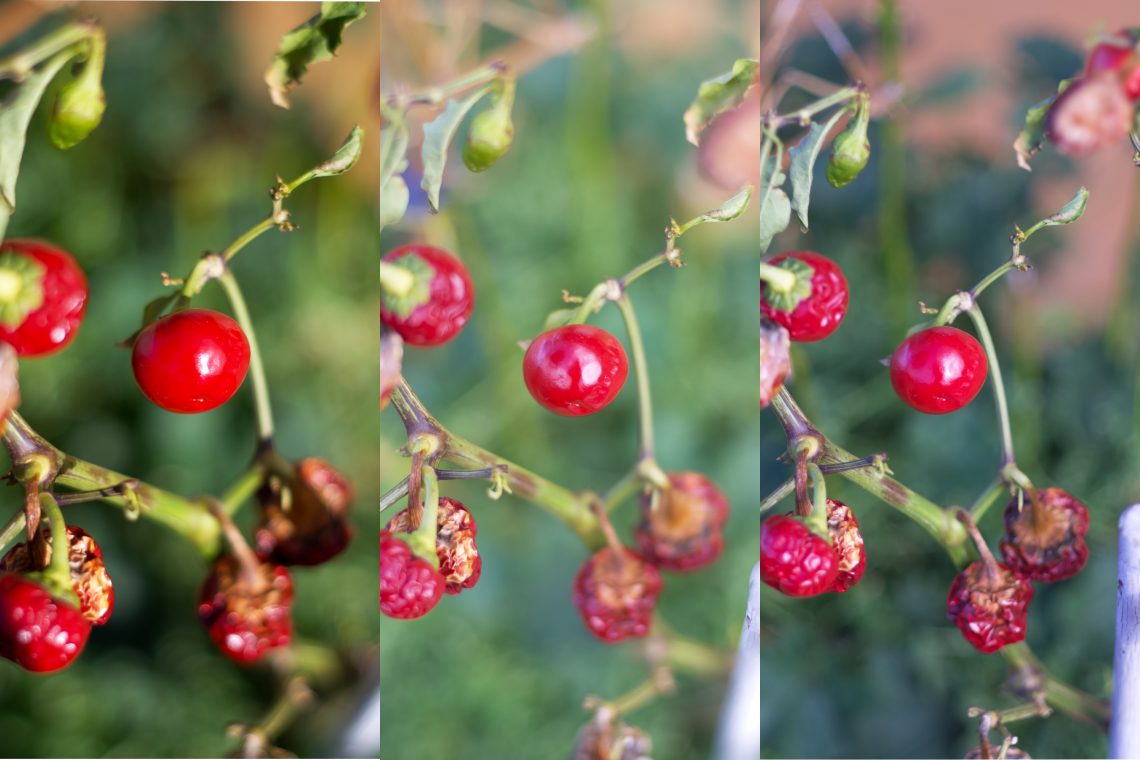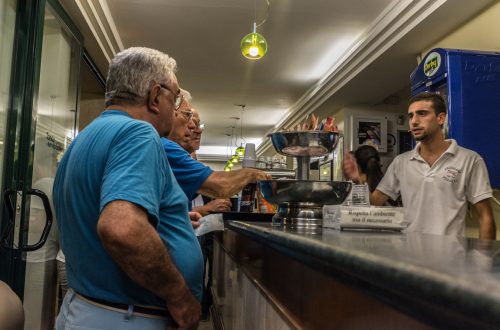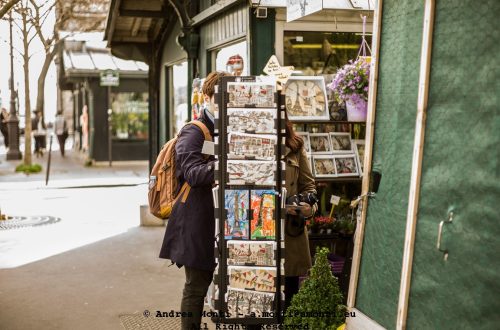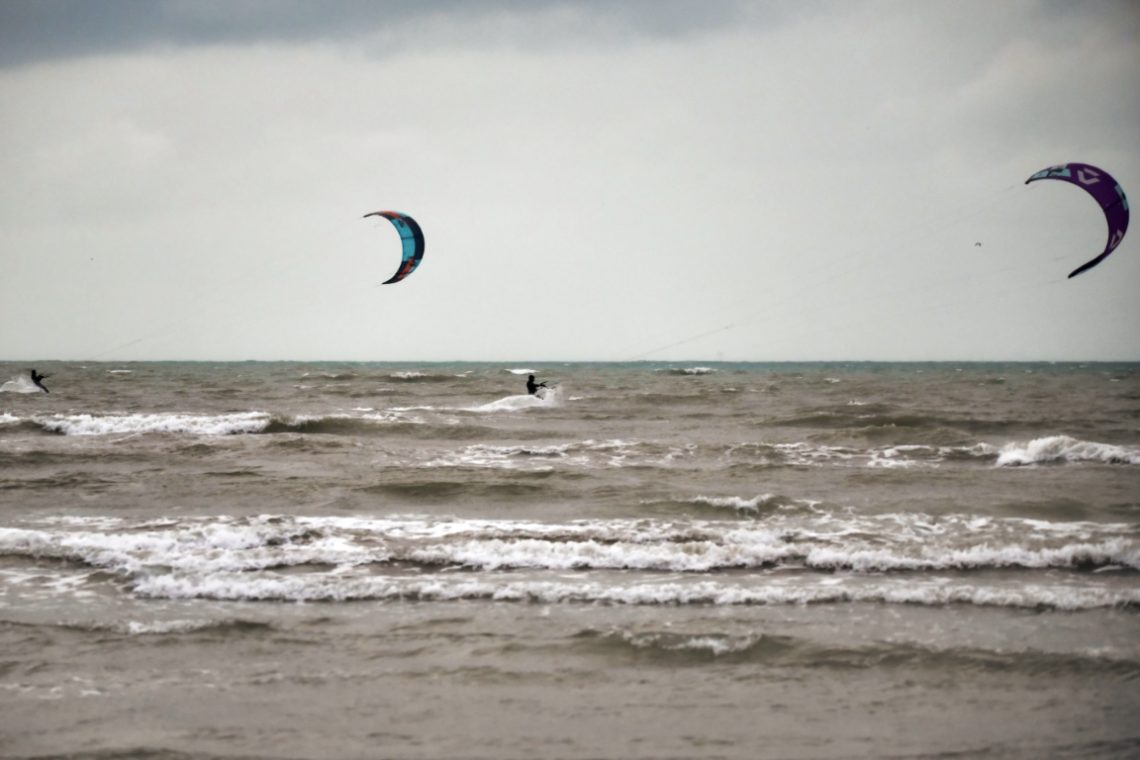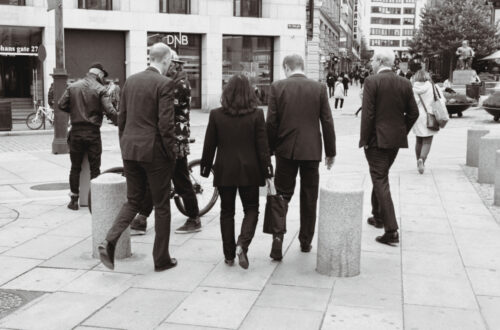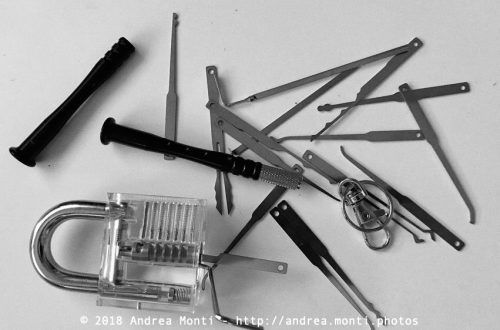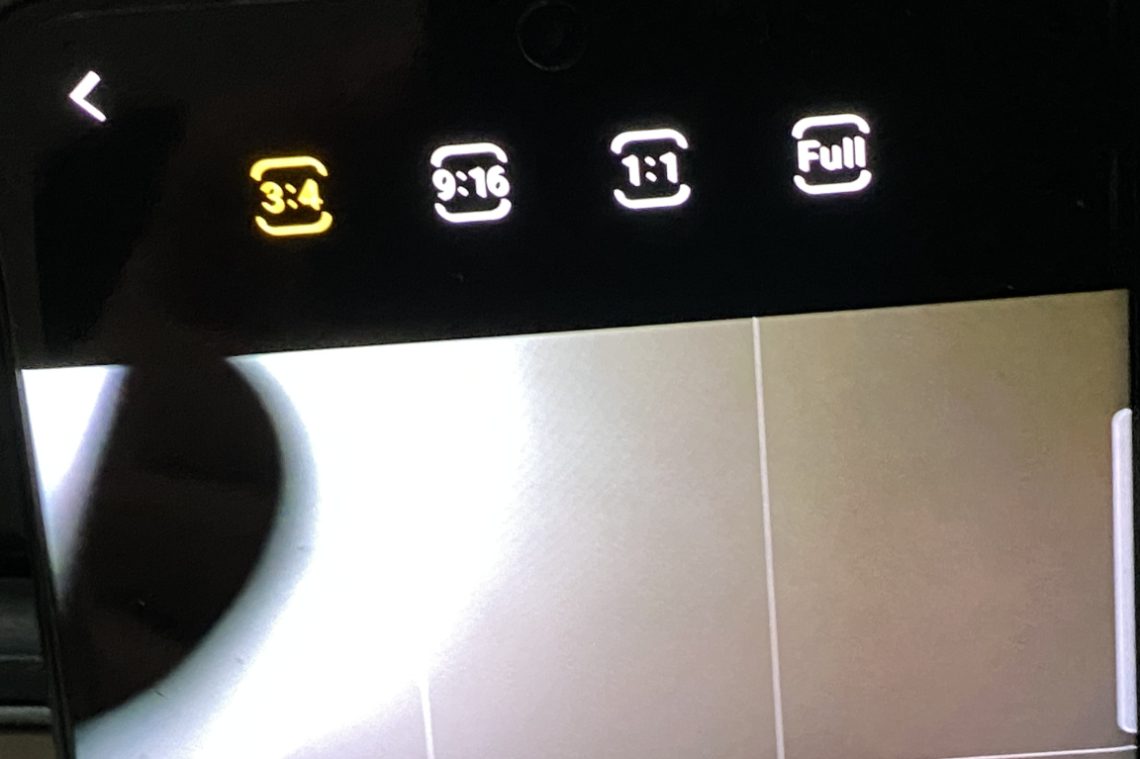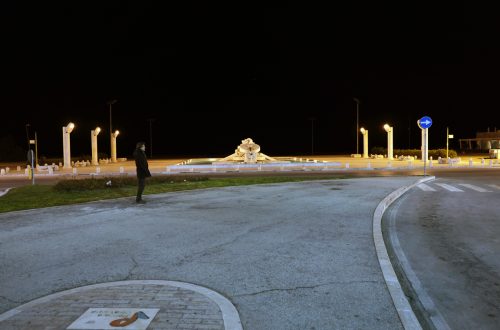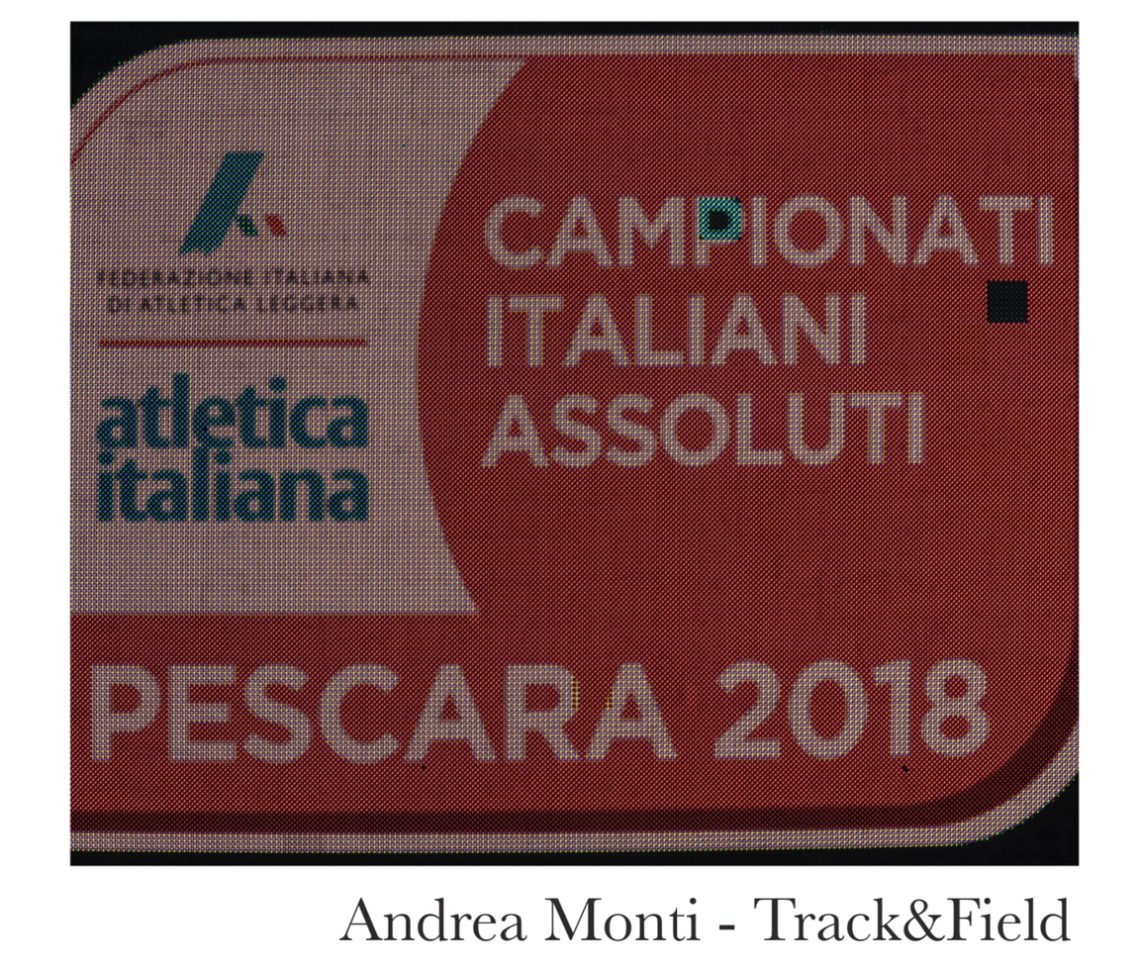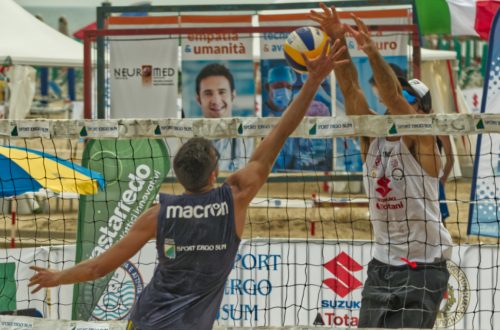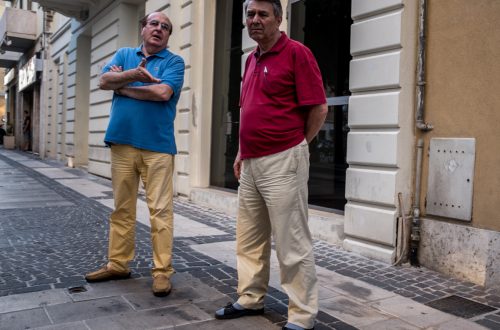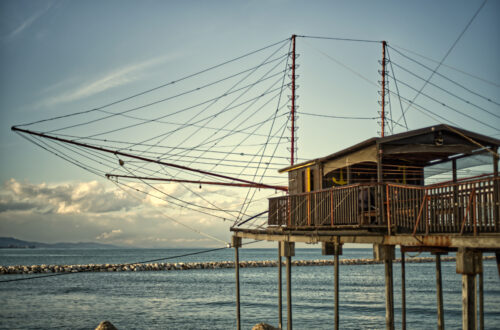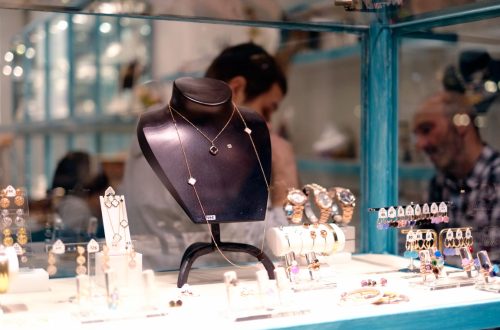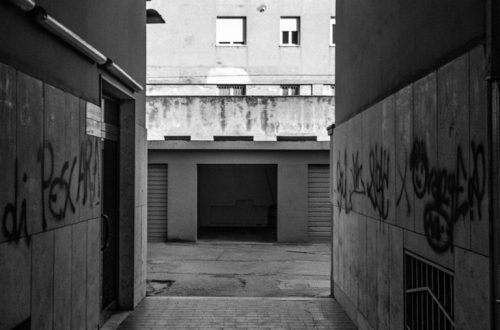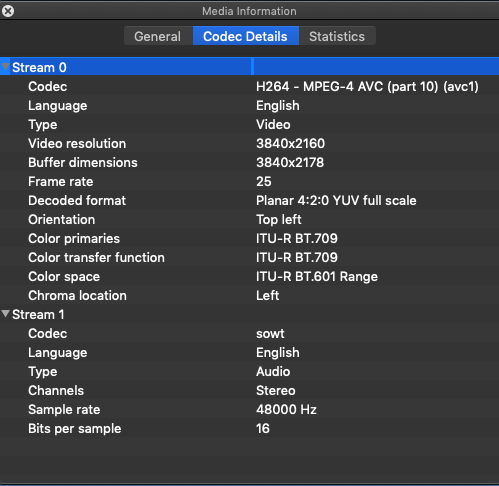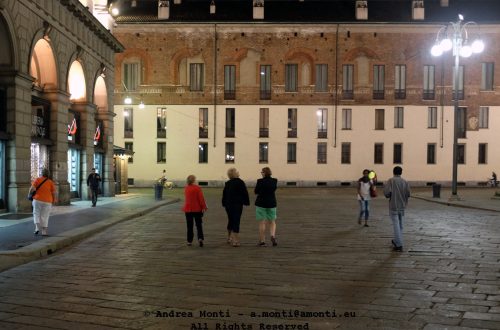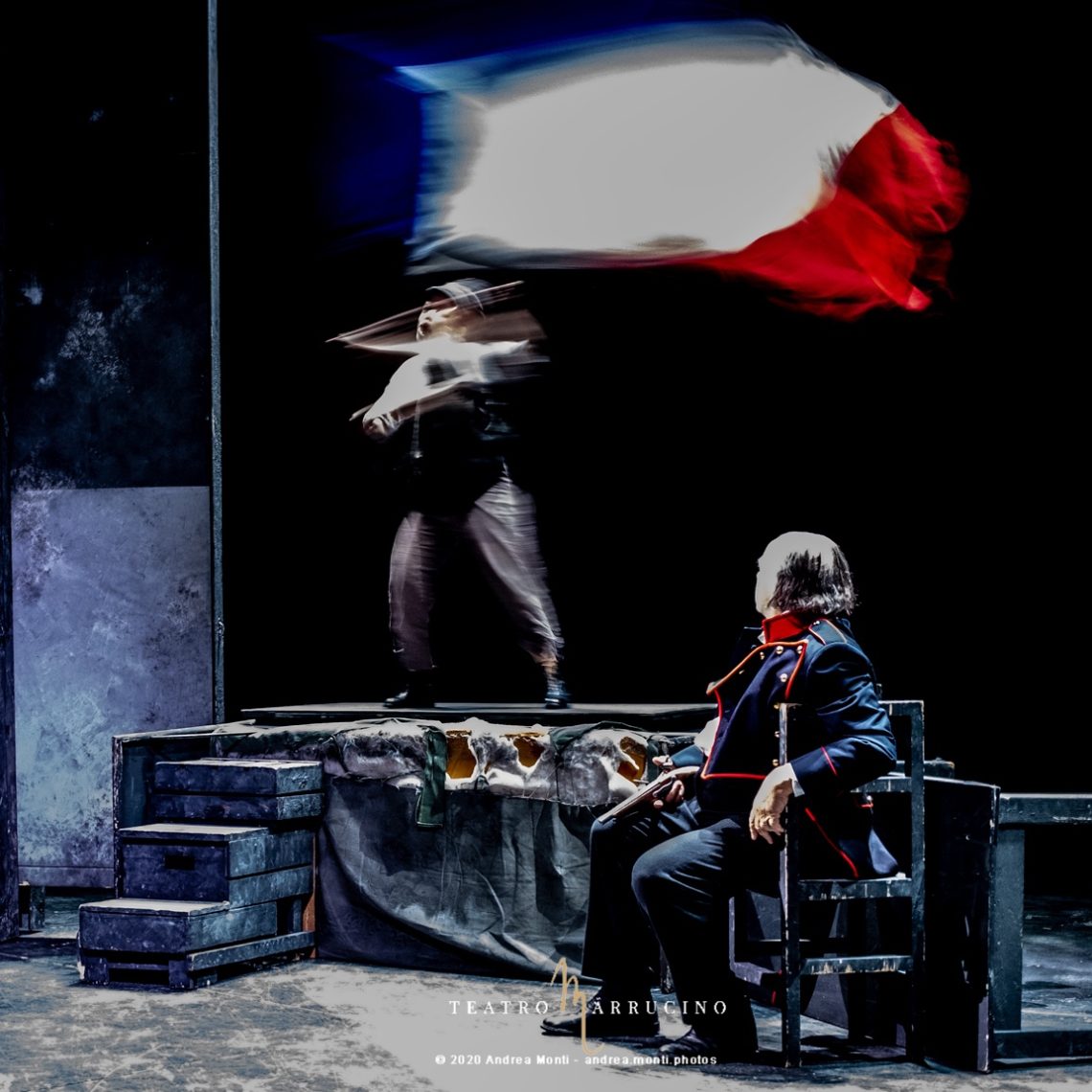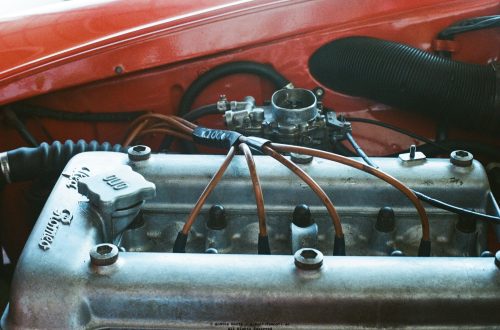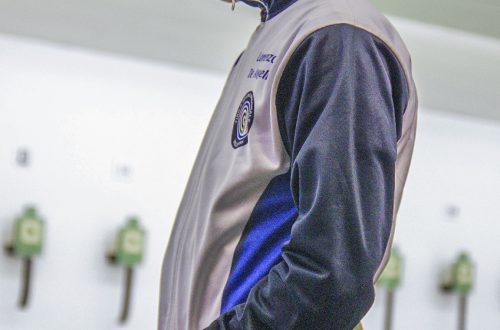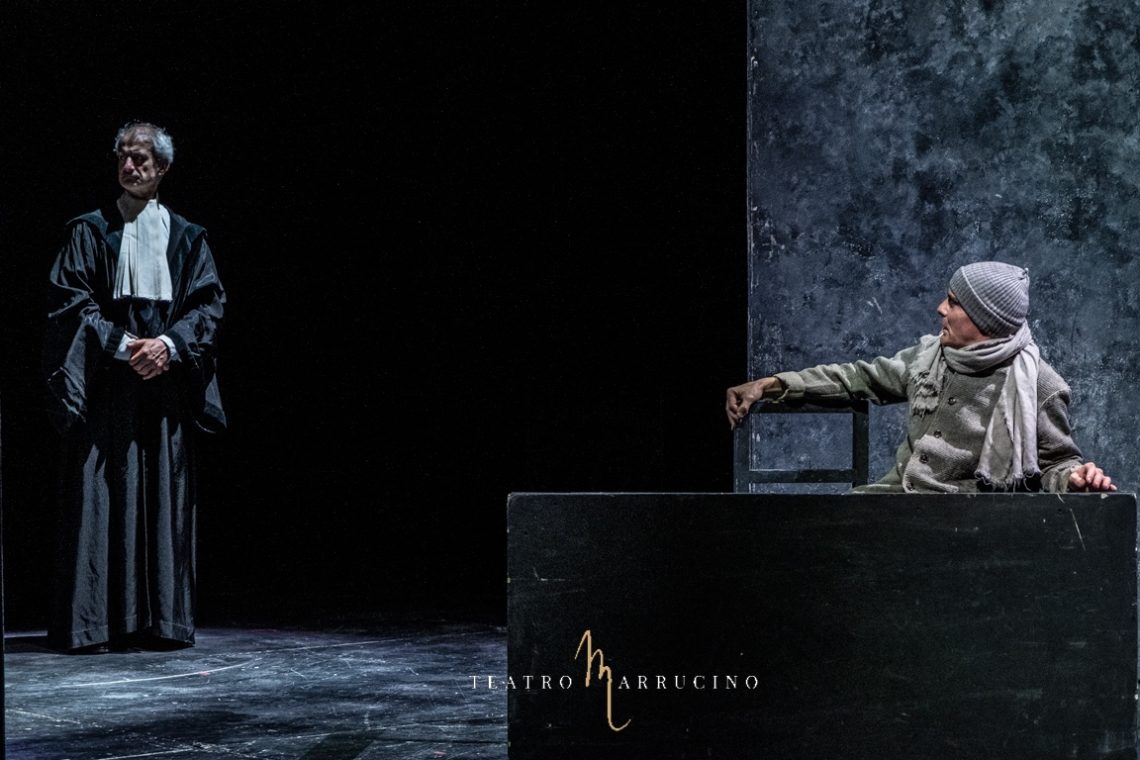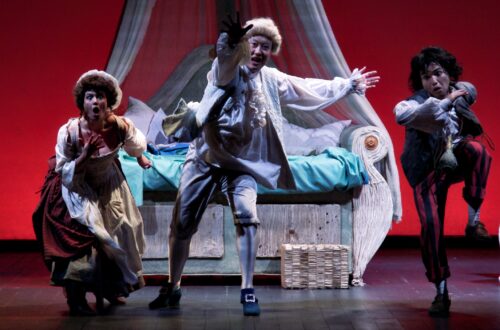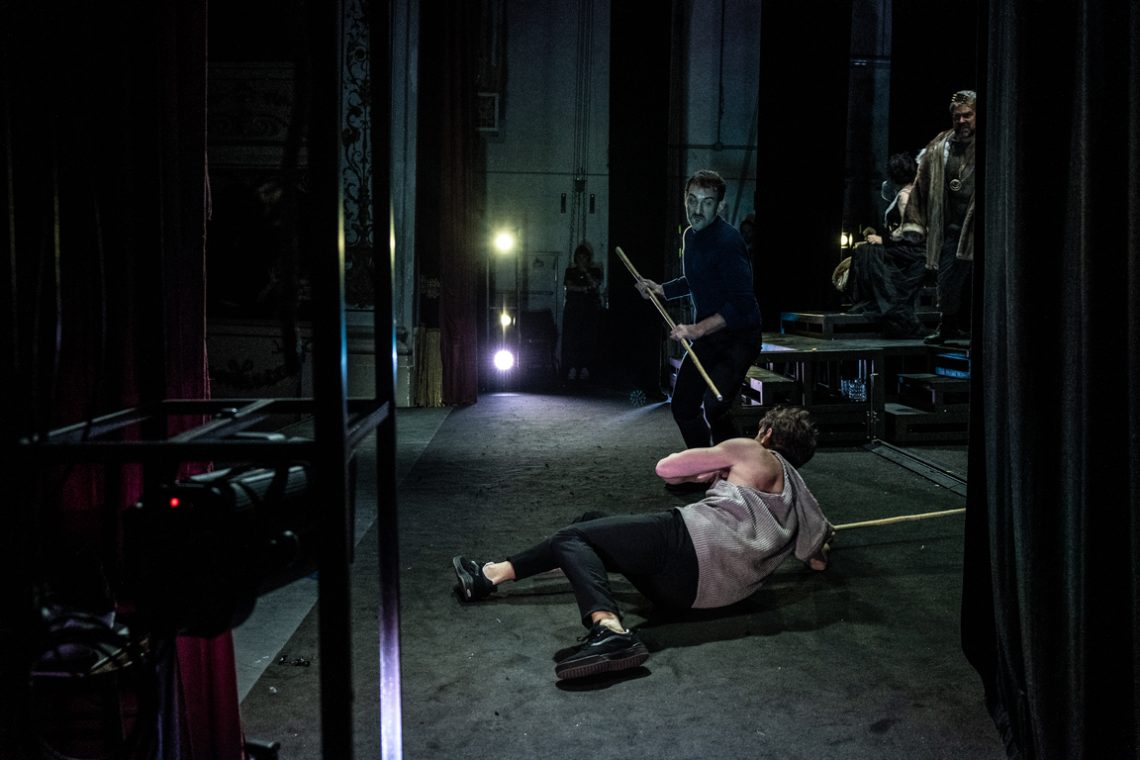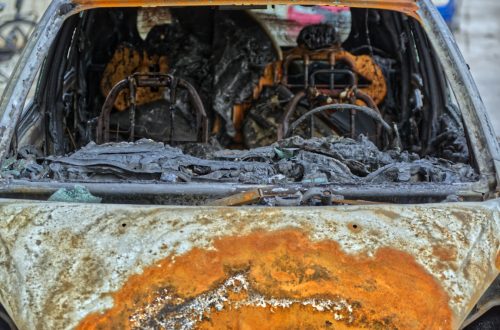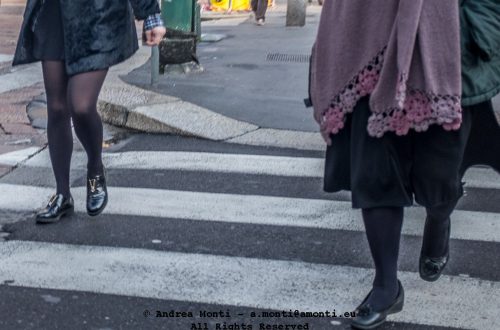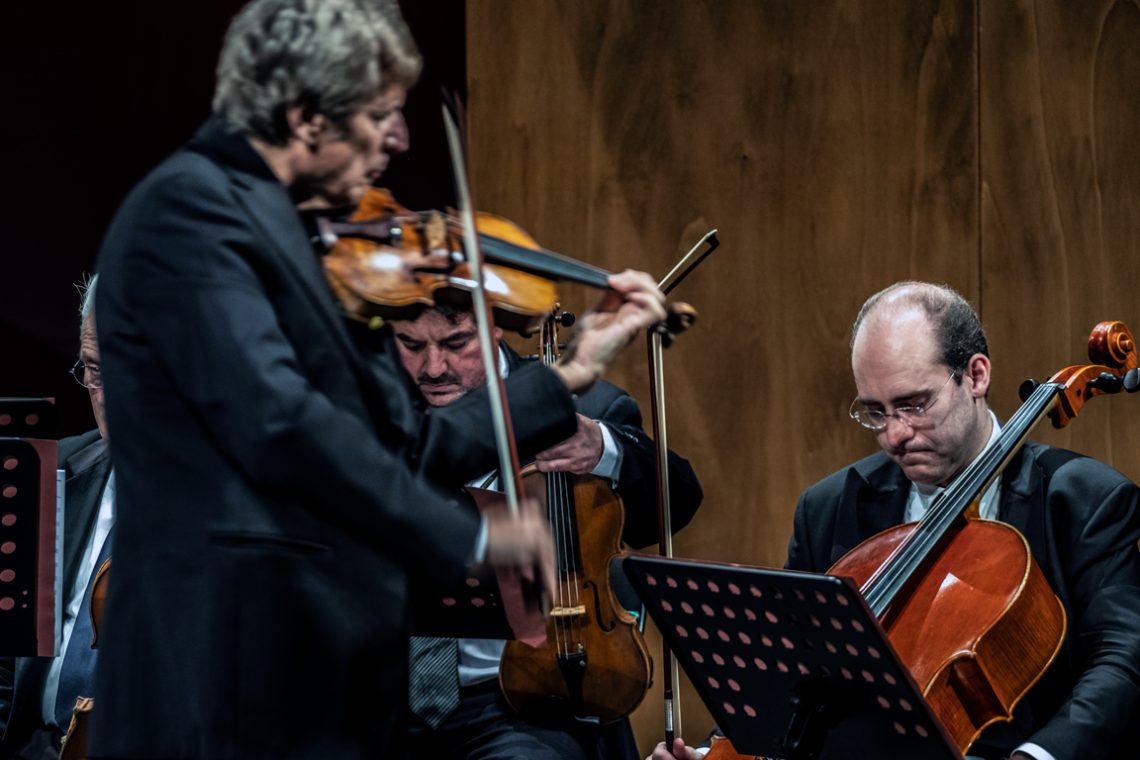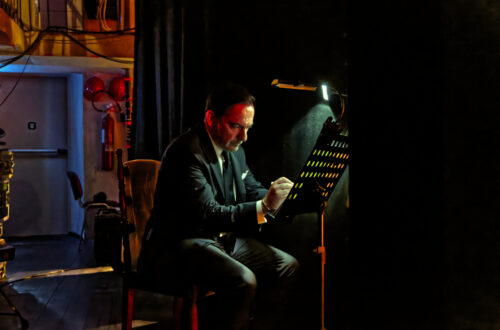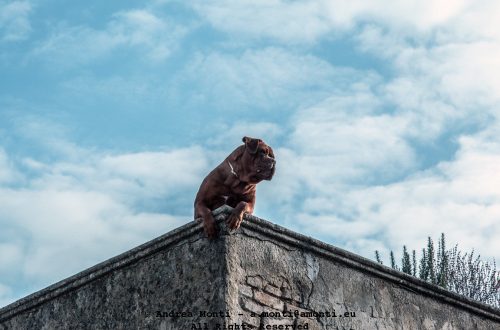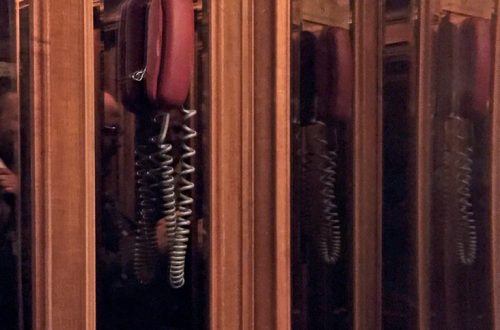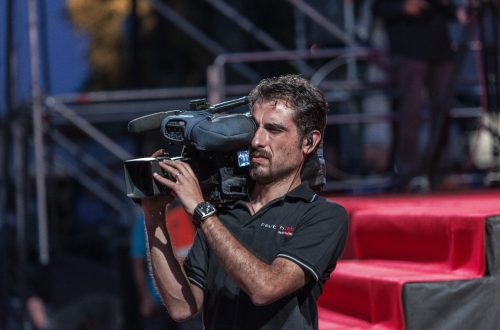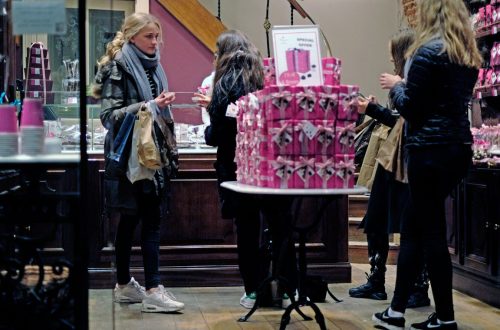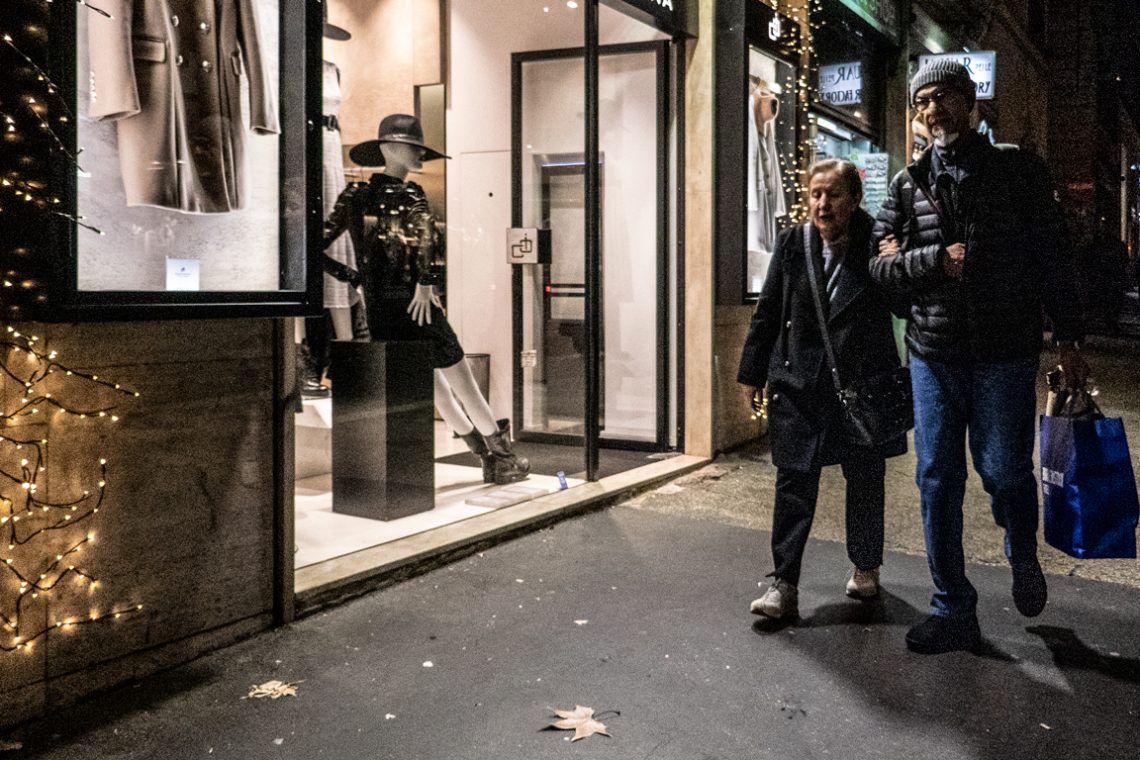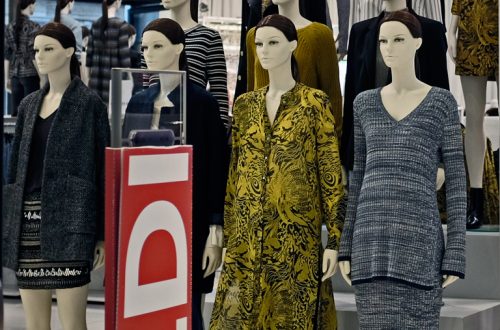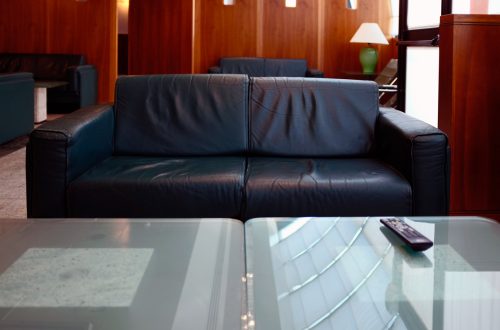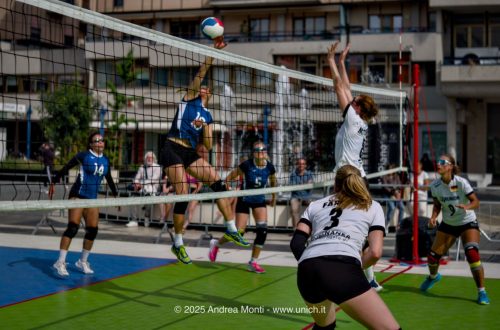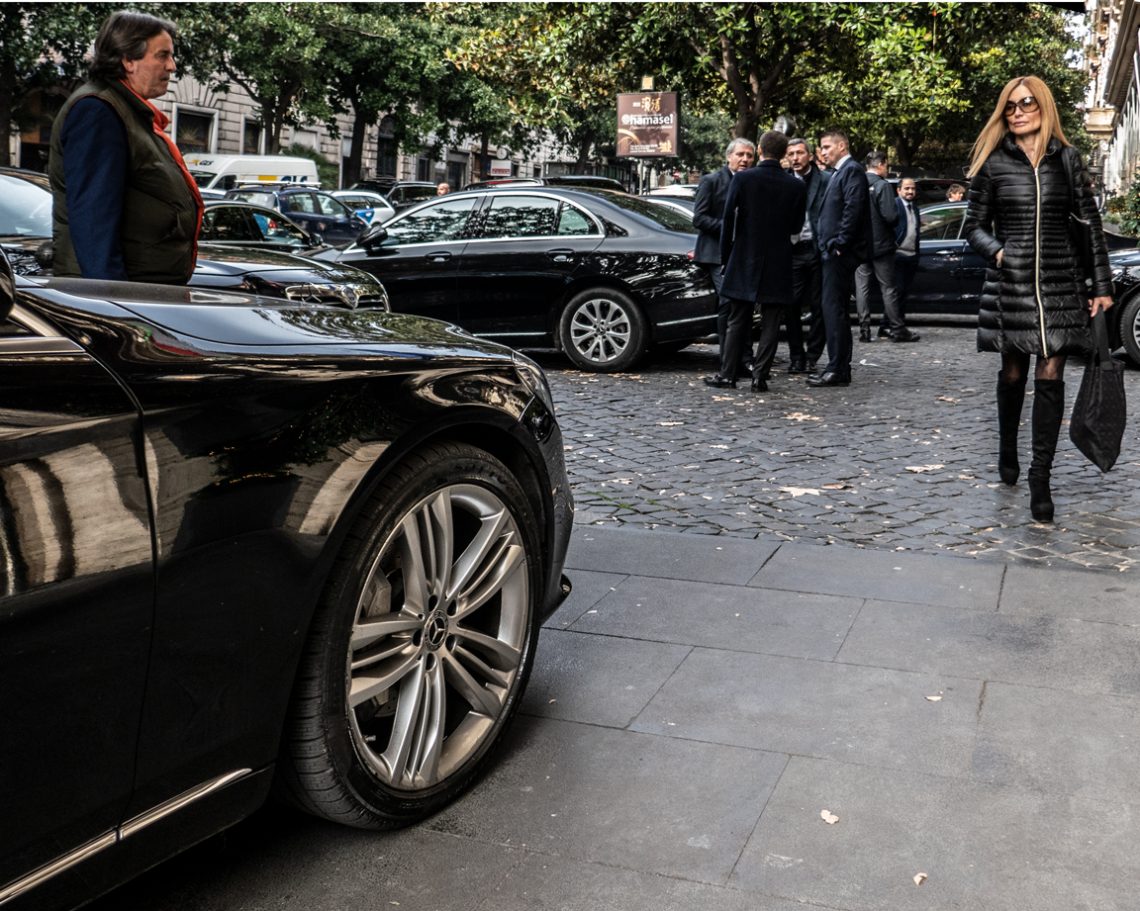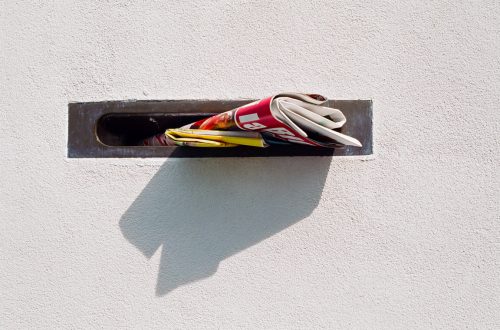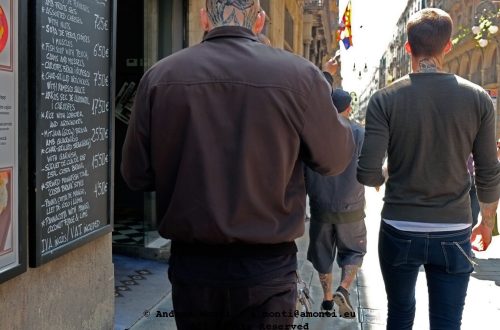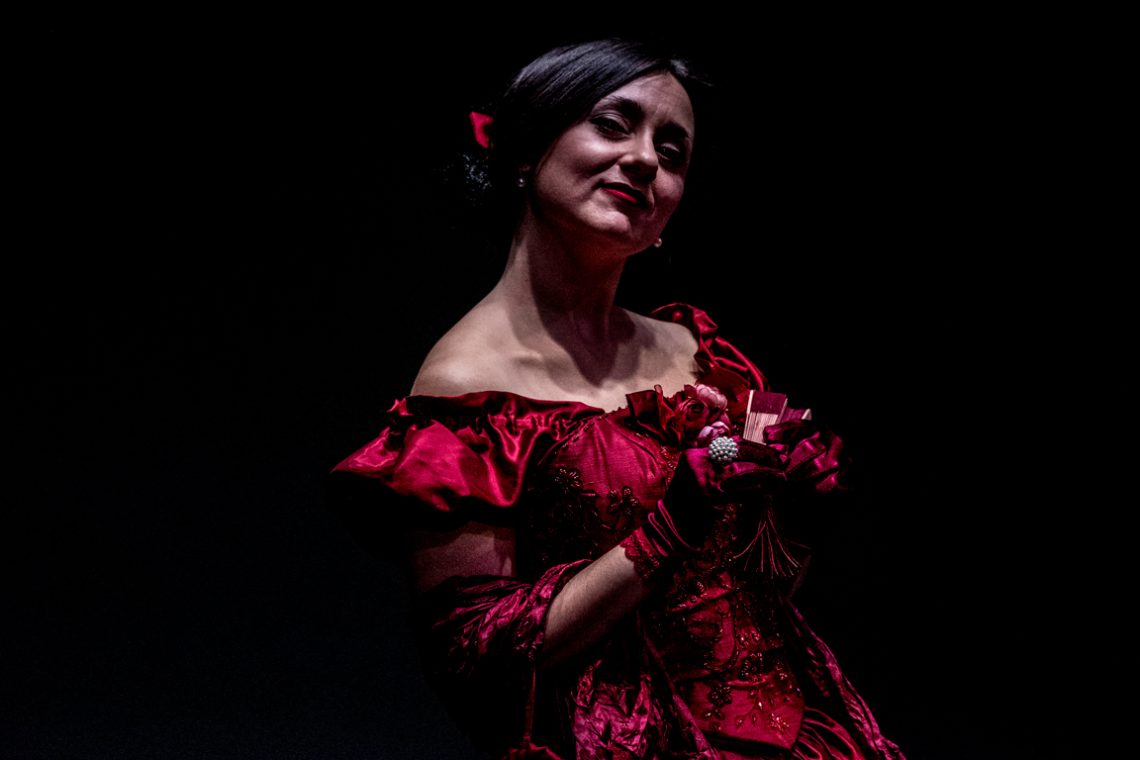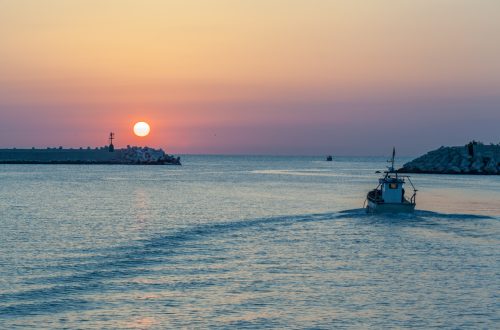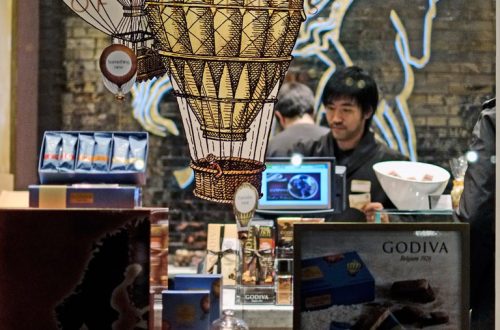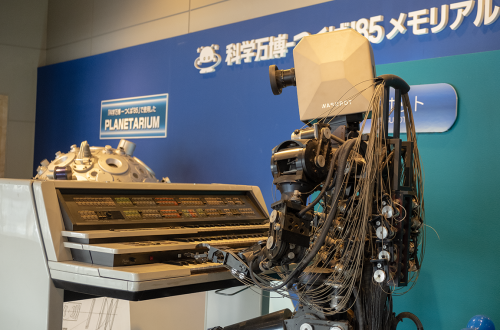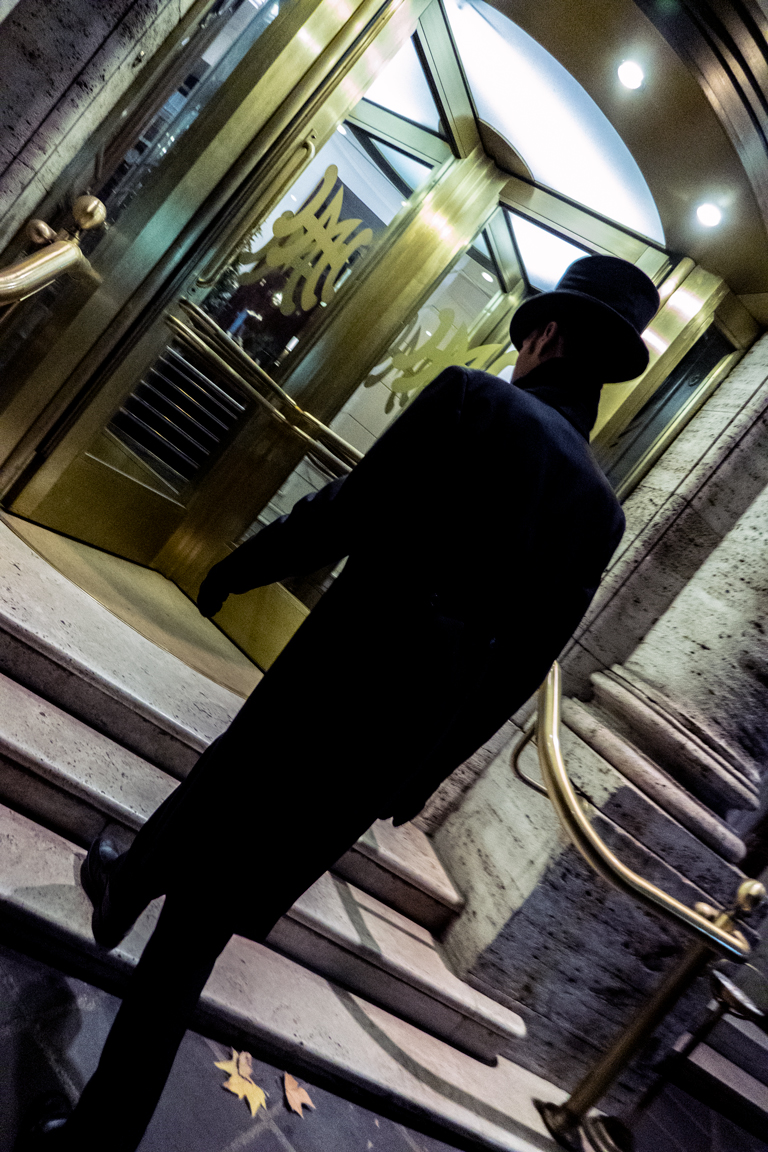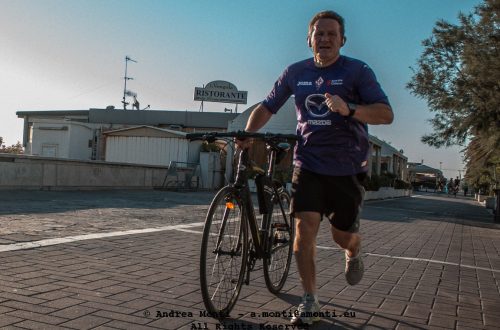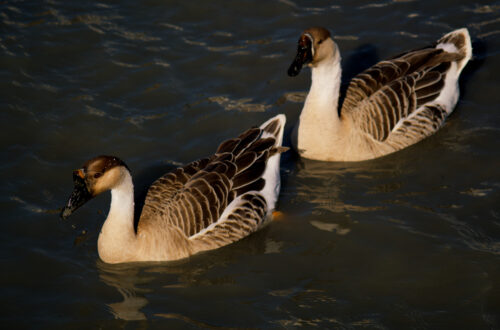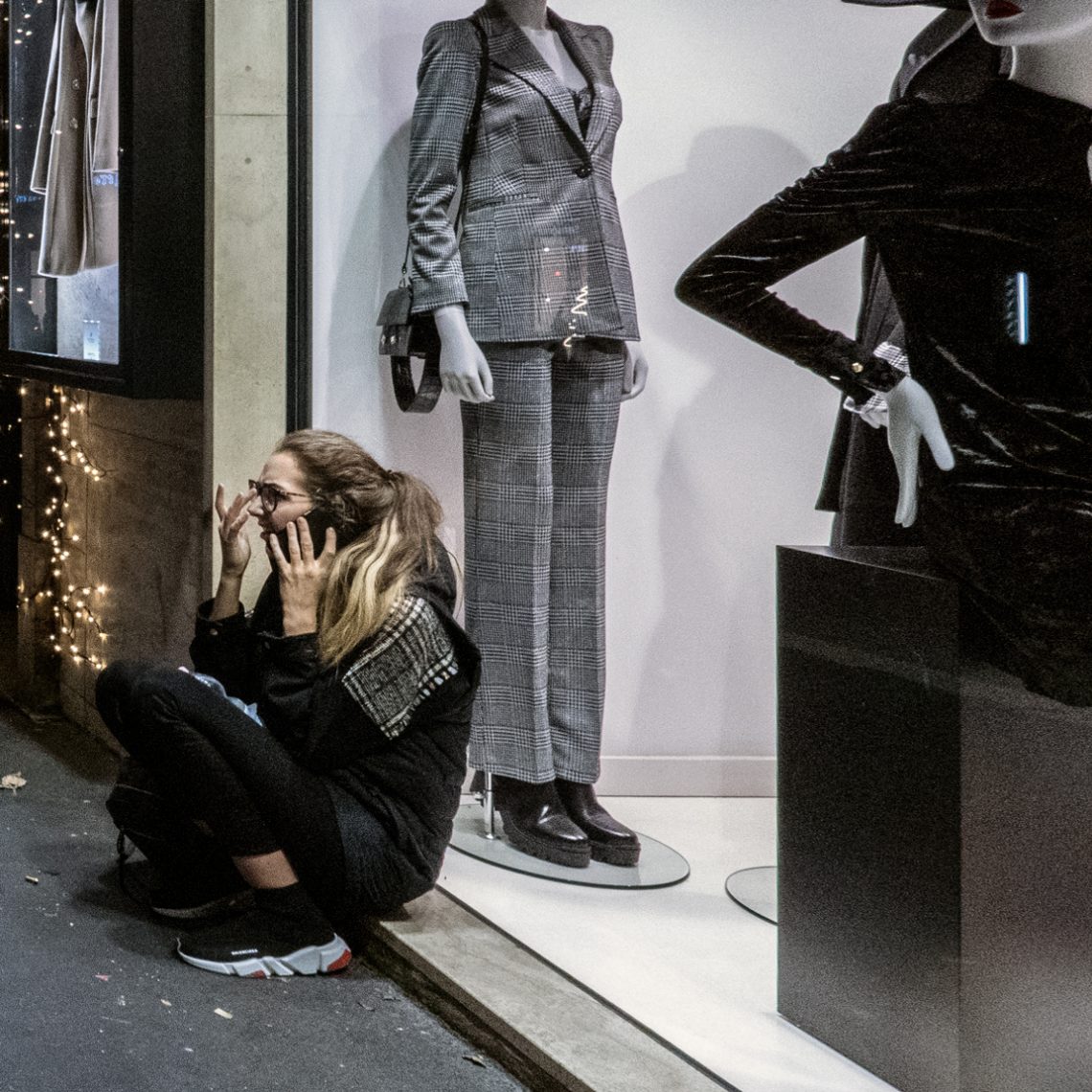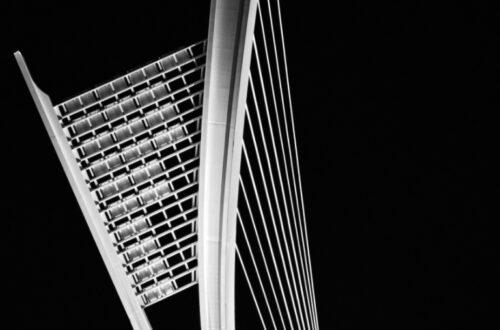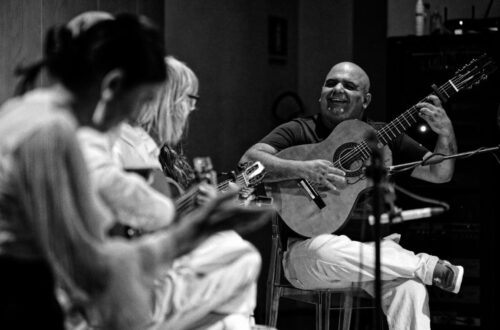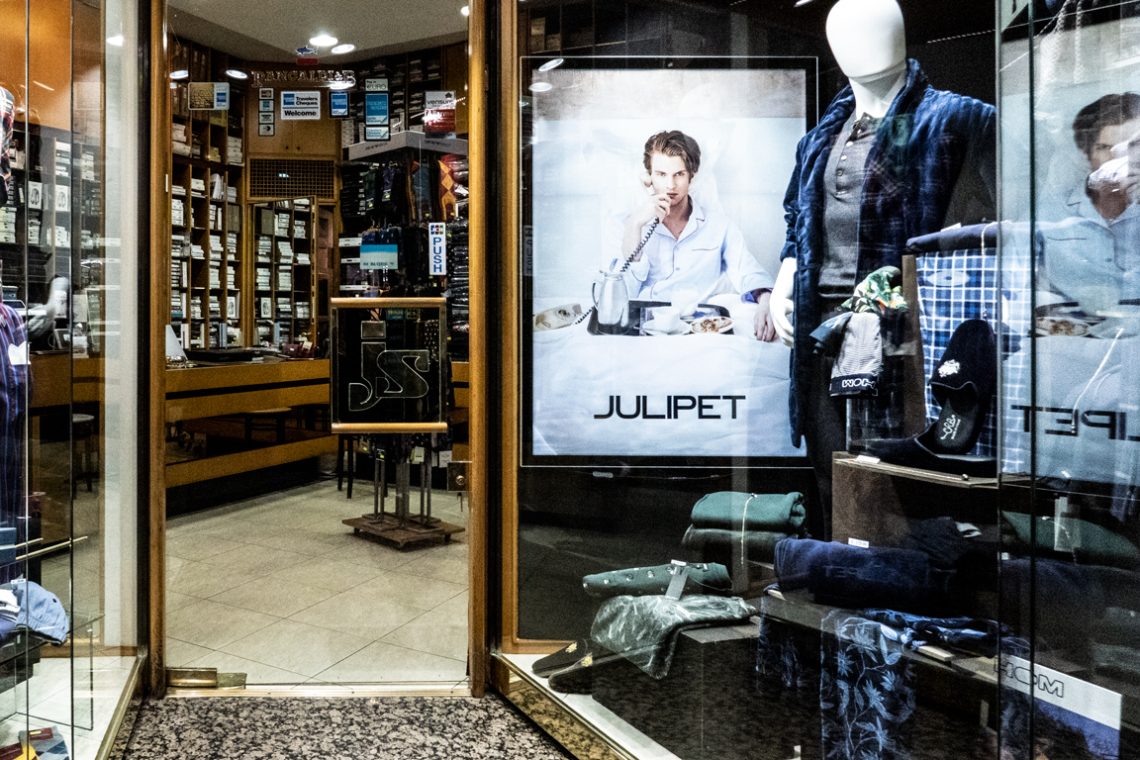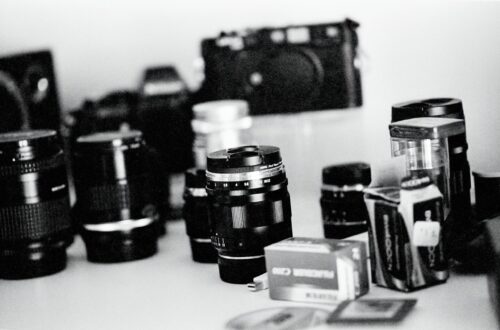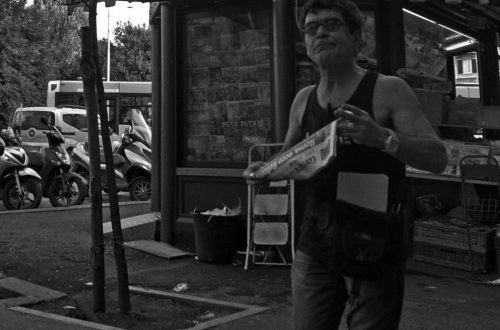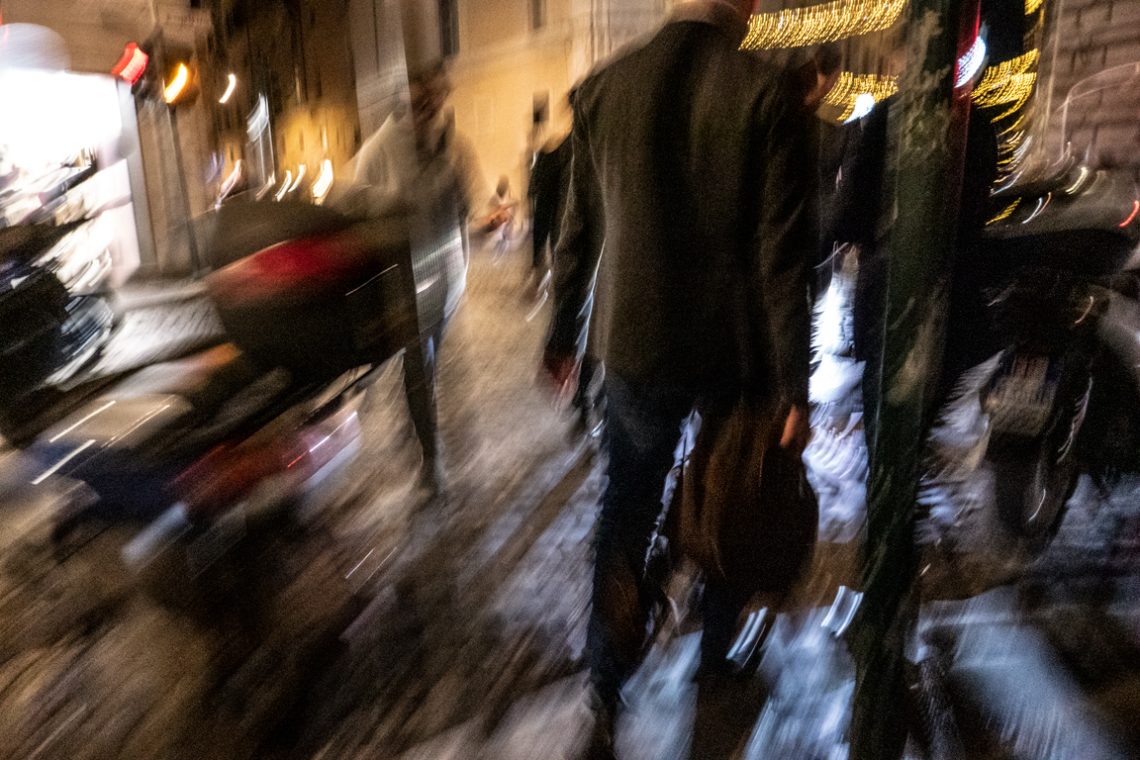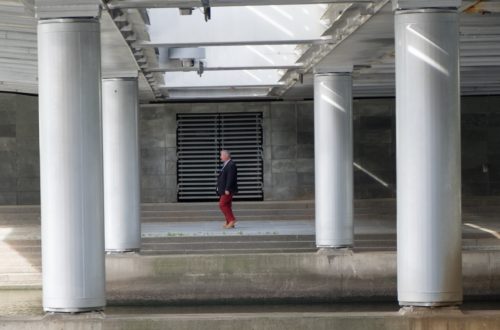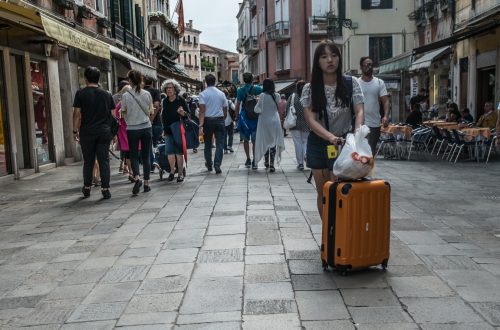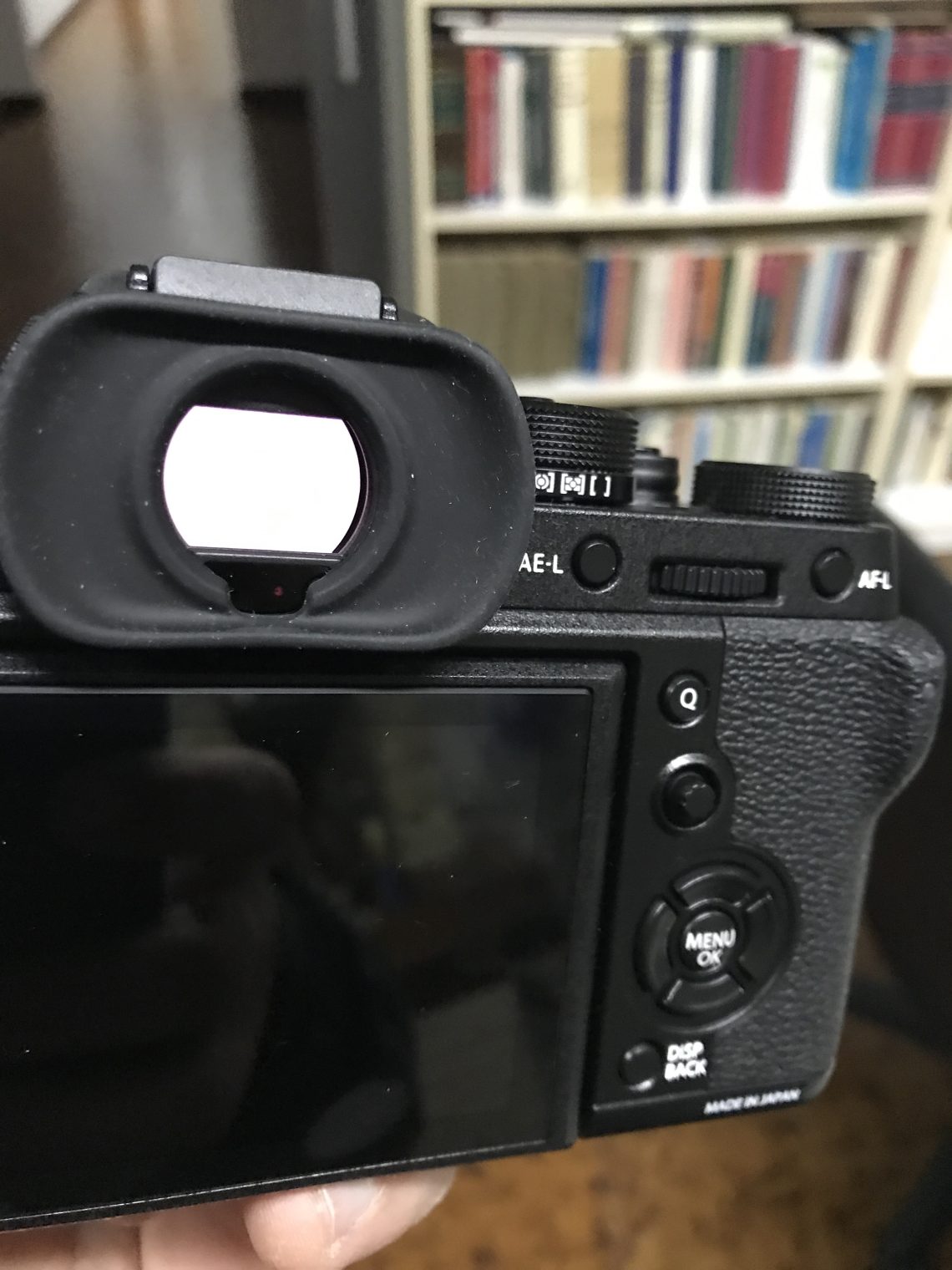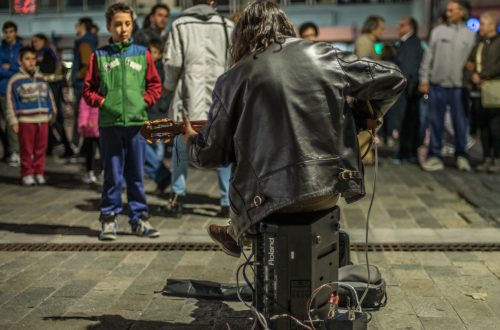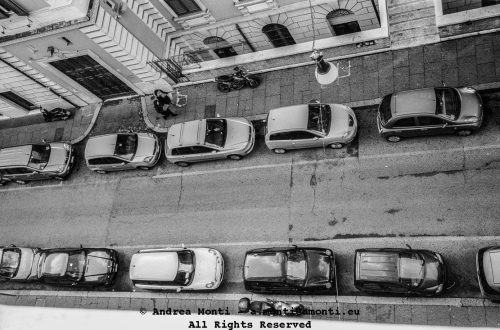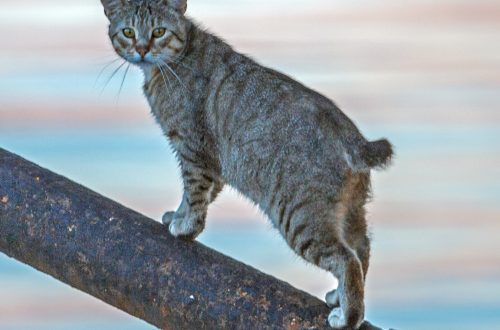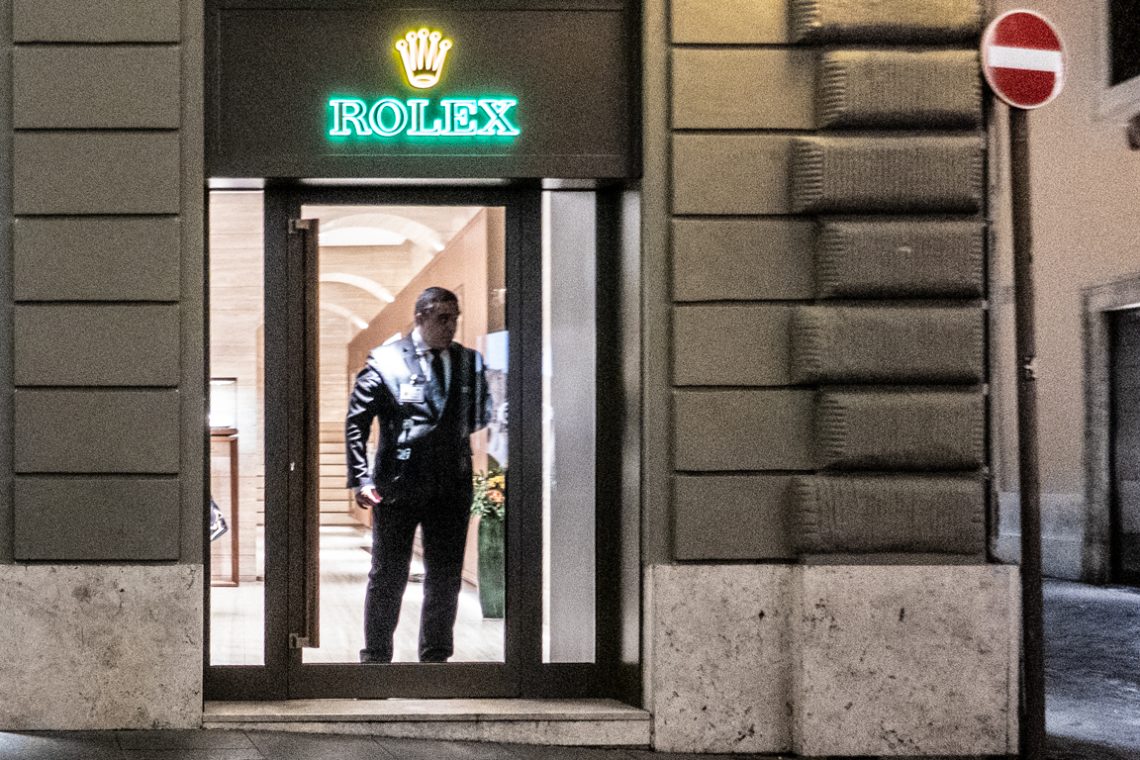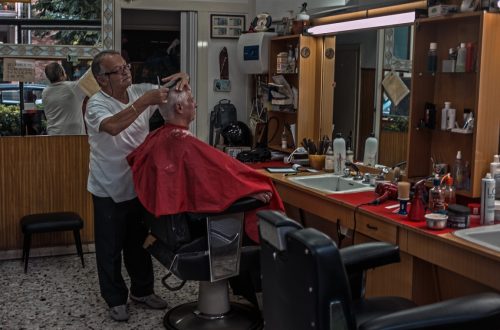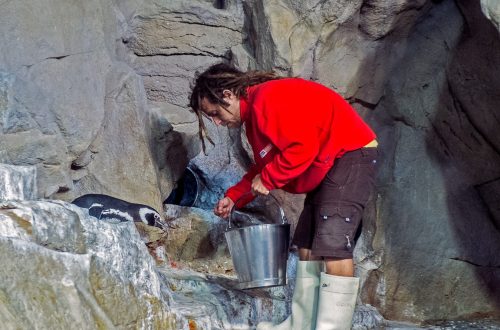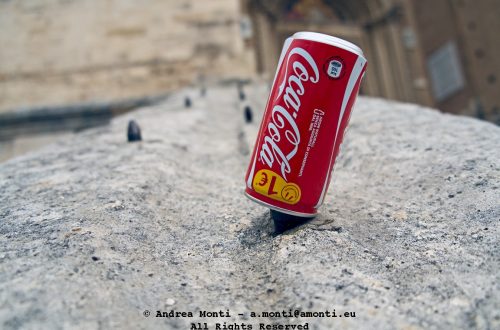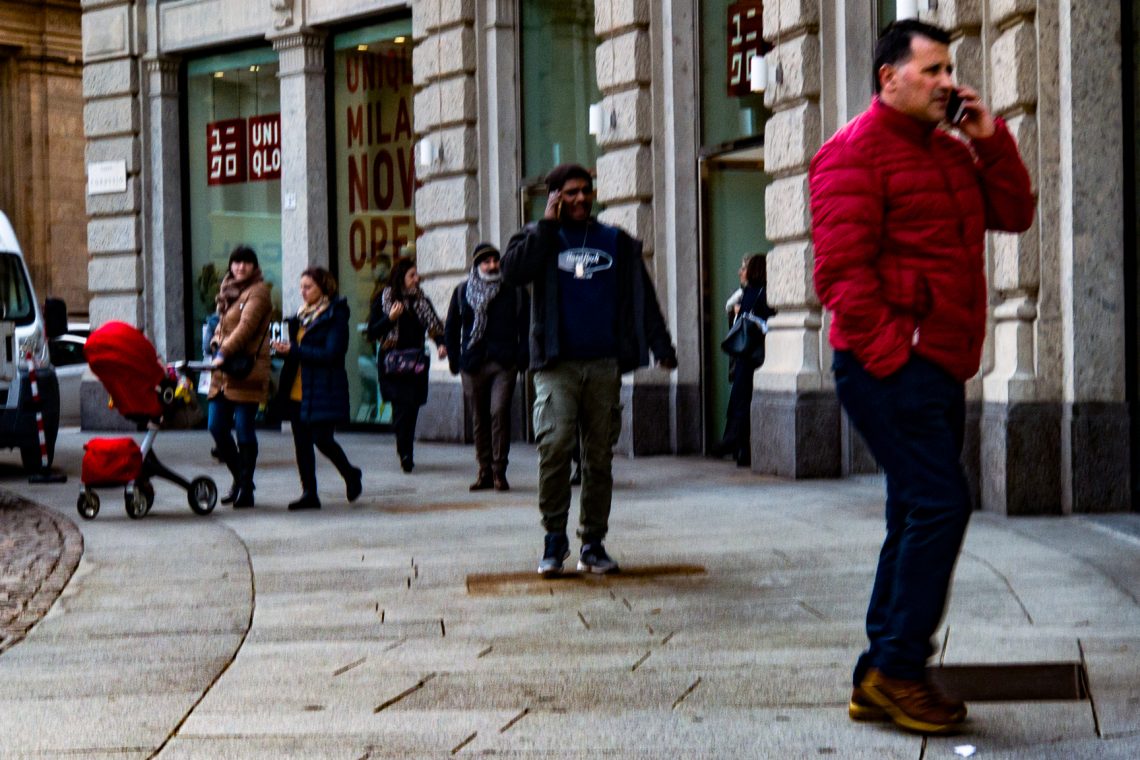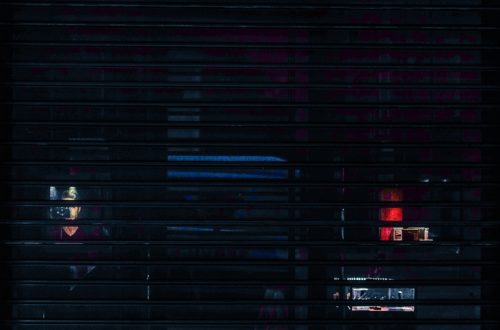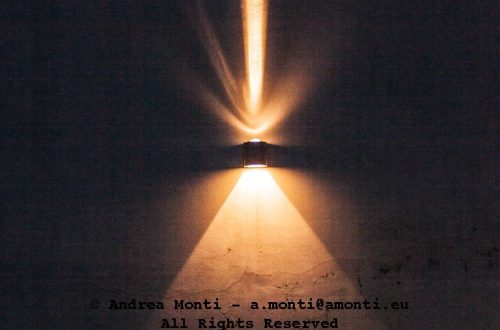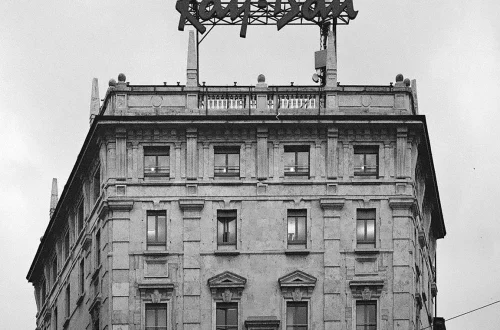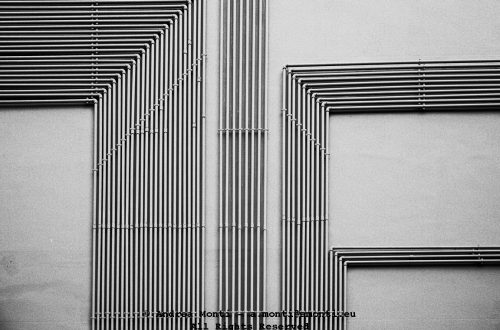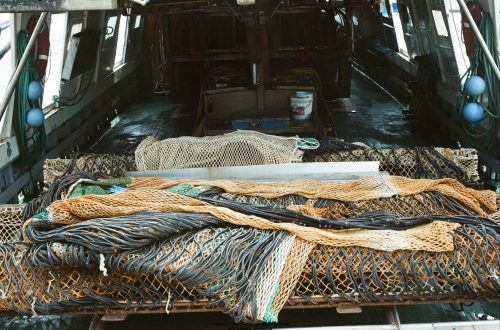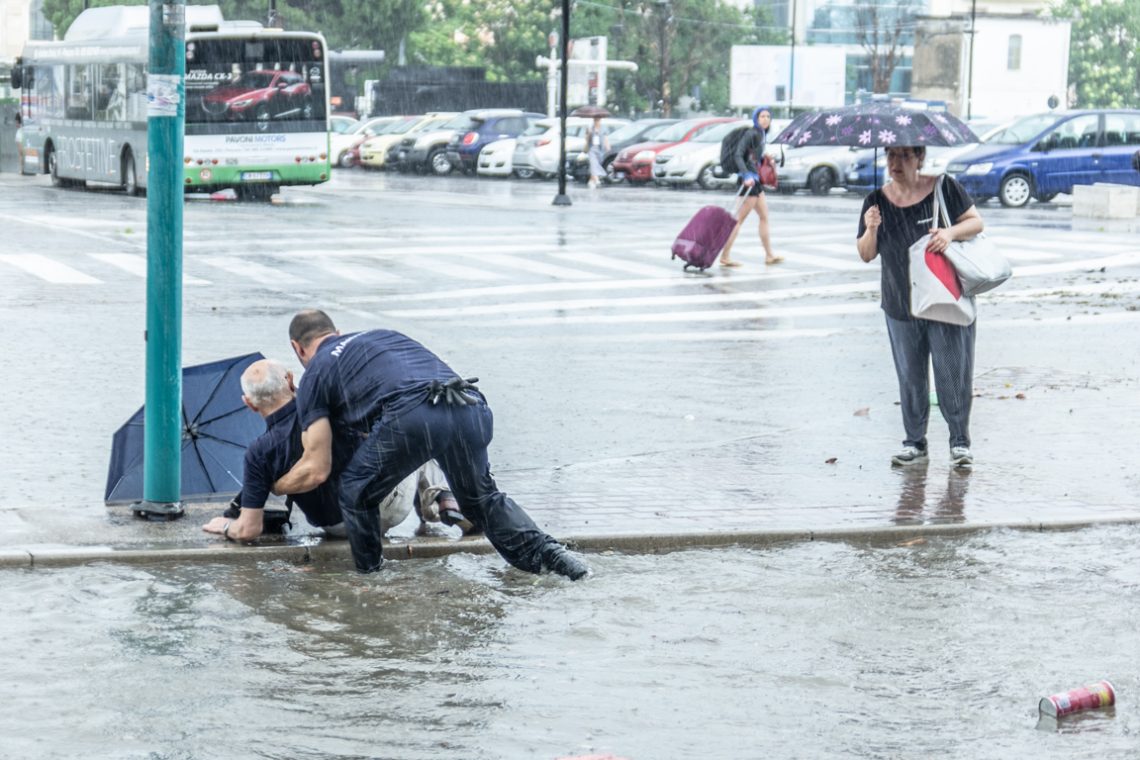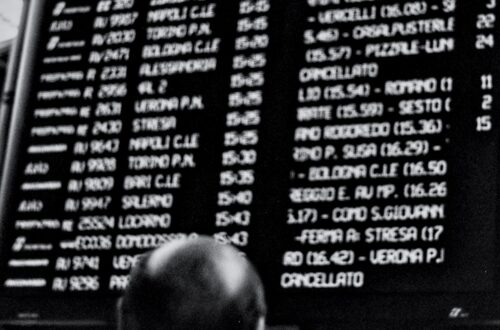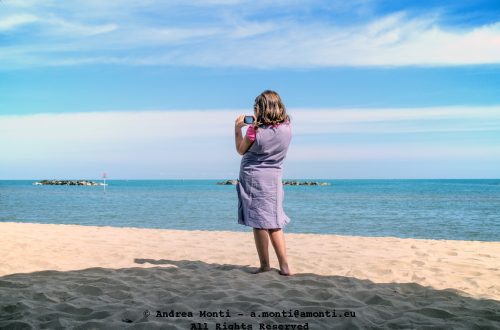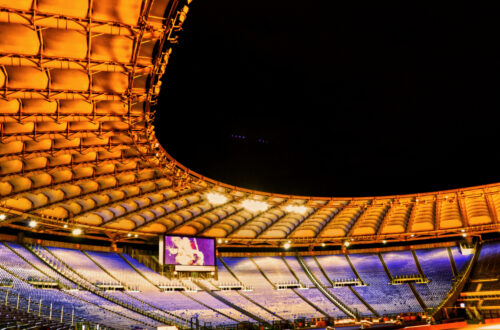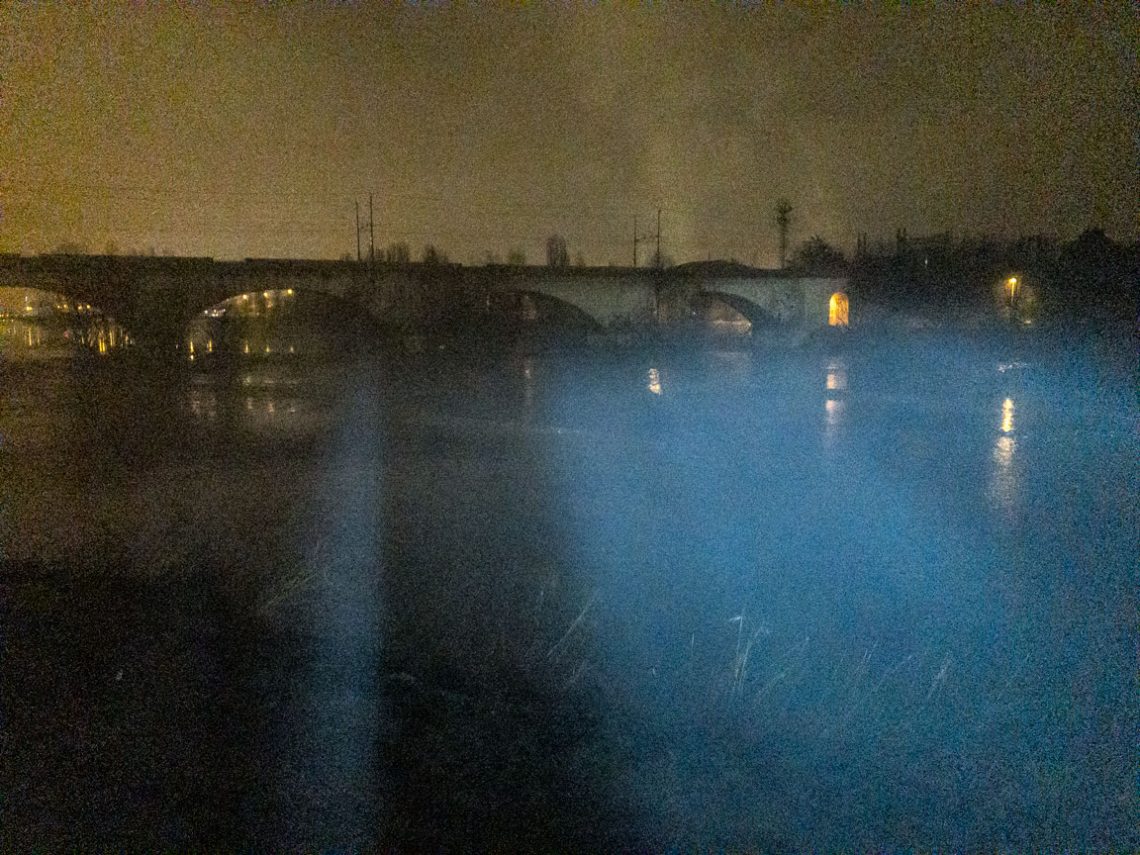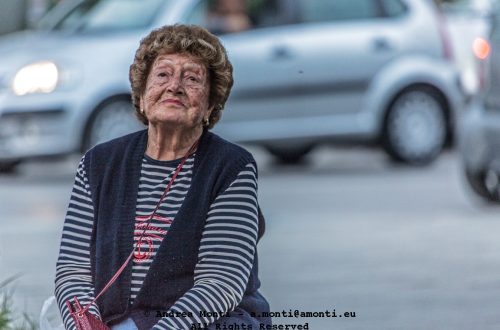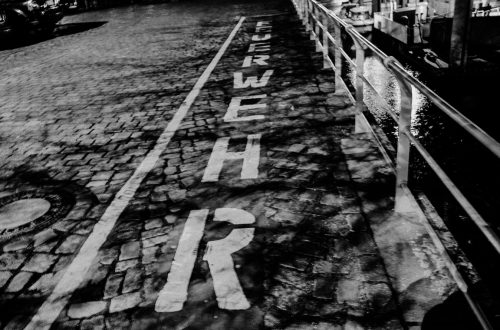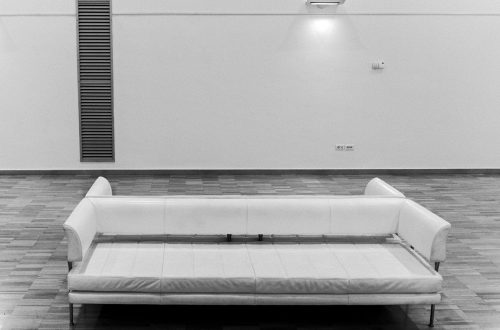-
Pentax SMC-A 50/1,7 – Nikkor 50/1,4 – Summicron 50/2
The left slice is taken with a Pentax K-1 and SMC-A 50/1,7, the centre with a Nikon D750 and a Nikkor 50/1,4, the right with a Fujifilm X-T3 and a Summicron 50/2. All the cameras were at their base ISO (100 for the Pentax and Nikon, 160 with the Fujifilm), at F2 and aperture priority. The K-1 and the X-T3 photos were shot in manual focus. Only the K-1 has IBIS stabilization. The jpg is taken in Affinity by slicing each OOC RAW file without post-processing.
-
Kite Surfer Under Duress
The wind was already rising when I reached the beach. Grey sky, hard light, the kind of day most people read from behind a window. But the kitesurfers were already out—lines taut, boards skipping through the chop. What always strikes me about this scene isn’t just the colour of the kites against a flat sky, or the sharp angles they carve into the wind—it’s the resolve. They know what they’re getting into. The cold. The salt in their eyes. The bruises. And they do it anyway. Because this is when it’s real. That’s what drew me to raise the camera. The same drive, maybe. You don’t wait for golden hour.…
-
Galaxy S21 Ultra 5g. The difference between Marketing and Reality in Image Quality
To put it short, this is what you get by purchasing a Galaxy S21 Ultra 5g using the standard camera app: access to all four lenses is limited to jpg, 108megapixel resolution is limited to one lens (the one Samsung calls ‘wide’ or ‘1x’), RAW format is only availble in ‘PRO’ mode, limited to ‘ultrawide’ (0,6x) and ‘wide’ (1x), with no access to 108megpixel resolution. Samsung advertises the Galaxy S21 Ultra 5g by spinning its 108 megapixel camera. However, it does not make clear that the 108 megapixel resolution is not available in “PRO” mode, the only that records in raw. By contrast, this super resolution is available in normal…
-
A Fix for the Wikipedia Photos’ Copyright Scams?
As reported by Petapixel, a new form of copyright (better, ‘moral rights of author) scam hits photographer: the credit stealing on Wikipedia. In a nutshell, as everything on Wikipedia is editable, somebody started changing the photos’ ownership information from the original author to somebody else who, as Petapixel writes, get a series of ‘benefit’. As bad as it sounds, copyright protection on the Internet is a lost battle for an individual. Some services like Unsplash “turned the problem into an opportunity”. However it did not solve the issue in general terms. I’m seriously considering if just going back to a print-only sharing is a better way to handle pictures’ copyright,…
-
Easy To Shoot?
This picture might look “ordinary” but for the fact that I shot it with a rangefinder film camera (guess which?) during the scene change between to acts of a theatre play. Scene assistants were placing the furnitures, actors were trying to focus on their parts, there was no time (and place) to design a proper composition and set the camera. No autofocus, no real-time exposure and white-balance setting. Maybe I have been lucky capturing the match flame close to the cigar, maybe it was because of “muscle memory”, but I did it nonetheless. Problem is that I could not be sure if I succeeded until, one week later, I saw…
-
Fuji X-T2 records audio at 16bit/48Khz
Neither the user manual, nor the Youtube ‘experts’ tell this open secret: the X-T2 samples audio at 16bit. Although the sample rate is 48khz (a standard in video production) 16bit may not be enough to record (a minimum) professional grade audio. This is not a big deal for the rest of the humans, but If you want to ‘go pro’ or need to unleash your Gear Addiction Syndrome be advised that to have 24bit/48Khz audio you must switch to the X-T3.
-
Meaning in Photography
In this picture, taken during the reportage I did for the Teatro Marrucino’s I Miserabili, an old and exhausted fighter rests while a young citoyen waves the French flag defying the fire of the royalists. The strength of the picture is in the dialectics created by the two protagonists, hinting at a “relay” between an old man that “gave all”, resting while a young man steps in.
-
Denegata Justitia
Sometimes a picture acquires a meaning that goes beyond the original intent of the photographer. In this case, taken from a reportage I did for Victor Hugo’s Les Miserables featured at Teatro Marrrucino, in Chieti, the photography becomes the archetype of the denegata Justitia. The defendant asks to speak, the justice stares elsewhere.
-
Breaking the Fourth Wall
Shooting a play is challenging because you must be ready to seize ‘the moment’ and, at the very same time, think of unusual compositions to avoid the boring ‘frontal’ perspective. Shooting part of the reportage from the backstage of Hamlet, with Giorgio Pasotti and Mariangela D’Abbraccio directed by Francesco Tavassi I had the possibility to experiment the breaking of the fourth wall. This picture is one of the results.
-
Counter-intuitive Focus
This photo I took during a reportage for a theatre hosting a concert of Uto Ughi shows a counter-intuitive use of focusing. Rather than go for the obvious option, the attention is shifted on the two musicians in the background capturing their concentration, with the leading violin blurred and conceptually, thus, ‘left behind’. The global effect is reinforced by a neat separation between the dark and light parts of the frame.
-
When Colour Helps Composition
This photo I took during a reportage of Miseria e nobiltà – a classic of the Neapolitan comedy by Eduardo Scarpetta – in the mise en scene of Lello Arena e Luciano Melchionna gives a lot of insights on how composition works. The triangle designed by the two actors on the sides and the taller actress in the centre is reinforced by the colours of the costumes: black in the centre, white in the sides. Finally, the purple background behind the black figure enhances the eye-driving effect toward the centre.
-
Deadly Bored
Once again, the meaning of this picture is counter intuitive and “made up” by the composition. The scene is seen from the perspective of the mannequin: at the end of a hard day spent sitting on the street-front, it (or he?) looks deadly bored and tries to kill the time before the shop closes by casually looking at the next passerby. The directional effect (from the mannequin to the passerby) is achieved by the diagonal connecting the tip of the hat, the feet of the mannequin and the cast of the shadow. Taken as a whole, these elements drive the eye from the mannequin to the persons and not vice-versa.
-
A Virtual Glance Dance
The essence of this photo is all in the glances of the protagonists. The man looks at the woman, the woman looks at the luxury car. The essence of this photo is all in the glances of the protagonists. The man looks at the woman, and the woman looks at the luxury car. It is this subtle game of glances that tells a story and turns the photography from a casual picture into something worth seeing. Once again, it is not relevant whether the people portrayed are actually involved in the “glance dance”, as what matters is the image to convey the meaning created by the overall result. This confirms…
-
The Power of Underexposing
This portrait was built in the shadows. Underexposing by design meant letting darkness dominate the frame, allowing only the essentials — the face, the glint of an earring, the folds of the dress — to emerge. The result is a scene stripped of distraction, where every visible element has earned its place. The composition is weighted to the left, pulling the viewer into the subject’s gaze and leaving negative space to amplify the drama. The rich crimson of the gown benefits from the controlled exposure: under normal lighting, its details might have flattened into uniform red; here, the fabric’s texture and the embroidery’s sparkle gain depth from the way light…
-
When Tilted Photos Work
Tilted photos are very challenging to take. It is easy to break the composition, lose an essential part of the scene, or take a bad picture. Furthermore, making sense out of a diagonal orientation with a ratio that is not square (Hasselblad people, I can hear you loud and clear!) adds layers of difficulties. As counterintuitive as it might look, this photo taken in a “normal” orientation would have lost all its visual impact.
-
Good Plan, Poor Execution
The idea behind the composition is entirely correct. The mannequins and the girl form a triangle, as does the direction of the stares, conveying both a sense of symmetry and counterposing the liveness of a human being to the puppets’ lack of. A poor execution, though, led to the mannequins’ head cut, turning a visually appealing photography into a meaningless shot.
-
Light as Meaning Shifter
The original idea behind this picture was to match the emptiness of the shop with the facelessness of the mannequin posing as a store clerk, to convey a general feeling of depersonalization. Unfortunately, the big lightblot represented by the poster close to the mannequin catches the observer’s attention and reduce the effectiveness of the composition. Instead of connecting the mannequin with the internal part of the store thus making sense of the whole picture, the eye just “sees” an ad poster.
-
Photopanning in Rome
Photo panning is an art in itself and – when adequately practised – is able to deliver a stunning visual experience. In this picture (that has not been altered but for contrast and clarity) the overall experience reminds the Impressionism aesthetics.
-
A Weird Fujifilm Battery Issue for X-series cameras
A defective battery can cause a Fujifilm X-series camera to start rattling and displaying blue, white or purple-striped screen in the LCD viewfinder. After three months of troubleshooting, having the camera traveling back and fro between my studio and Fujifilm Italy tech support, they have been able to identify the issue: a defective battery didn’t send enough power to the camera, thus jeopardizing its operation. Here is a Youtube video I made that shows the issue
-
Keep Out!
This photo conveys a message of “rejection”: first, a security guard who blocks access to the jewellery and then a signal of a prohibition of access reinforces the concept, thanks to a composition that guides the eye to a diagonal that goes from the bottom to the top, from left to right. Obviously, there is nothing “true” about all this because the overall result is the result of the organization of the spaces and the management of the perspective that allow connecting semantically elements that, in reality, have no relationship between them. It would have been enough to shoot from a different angle – or not juxtapose the security guard…
-
Evolution in Red
The frame unfolds on a Milanese street, a busy scene of people moving in different directions, yet bound by an unplanned visual thread — the colour red. On the far left, a stroller stands out, its fabric vivid against the muted tones of the pavement and stone façades. On the far right, a man in a red jacket, phone pressed to his ear, anchors the other end of the composition. Between them lies the space in which meaning is manufactured by the viewer: a perceived transition from childhood to adulthood, implied but never intended by reality itself. The technical construction supports this interplay. The image uses depth rather than focus…
-
Will The iPhone Kill Traditional Cameras? Not Very
This isn’t a critique of smartphones in general—it’s a direct response to the overconfident marketing myth that an iPhone can replace a dedicated camera in every scenario. I took this photo to illustrate the limitations, and it delivered. Overprocessed, hyper-smooth, plasticky where it should have texture, and clinically shallow in all the wrong ways. Technically, the iPhone did what it was programmed to do: expose for the highlights, boost saturation, fake depth of field with computational blur, and call it “smart.” The result is a scene that looks like a rendering rather than a photograph. The contrast between the dead leaves and the healthy ones is crushed into flatness. No…
-
In the Rain, A Helping Hand
The rain hit fast and hard. Streets turned to rivers in minutes. I was sheltering under a bus stop roof, camera still strapped around my shoulder, when I saw the man go down. Not dramatically—just a slow, heavy fall as he misjudged the kerb under the surge of water. Then came the officer. No hesitation. No fuss. Just a clean, instinctive move to lift him. The Leica didn’t leave my eye. I shot quickly—no time to compose in a traditional sense, but sometimes the moment doesn’t wait for your geometry. The turquoise pole on the left anchors the frame almost by accident. The crossing lines in the background help balance…
-
Wasted Shot Because iPhone 7 Poor Low-Light Handling
There’s a certain frustration in watching a scene unfold that you know deserves better than the tool in your hands can give it. This was one of those moments. The Adige was shrouded in mist, the bridge arches glowing faintly from warm streetlights, the water reflecting pinpricks of gold — a scene so atmospheric it almost photographed itself. Almost. The iPhone 7 Plus, for all its merit in good daylight, simply doesn’t hold up when the light falls away. The sensor struggles, the noise reduction turns painterly, and dynamic range collapses into a murky smear. What was meant to be a layered play of mist, water, and stone turned into…
